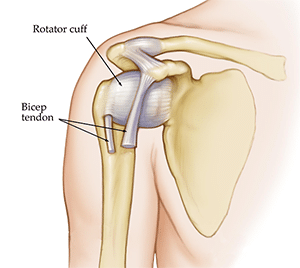 Shoulder impingement syndrome occurs when rubbing the rotator cuff between the humerus and the top of the outer edge of the shoulder. Therefore, swelling starts and additional narrowing of the spice. This narrowing of the space results in pain and irritation, causing shoulder pain. Treatment methods commonly used such as rest, ice, physical therapy, cortisone injections, and surgery are the last resort.
Shoulder impingement syndrome occurs when rubbing the rotator cuff between the humerus and the top of the outer edge of the shoulder. Therefore, swelling starts and additional narrowing of the spice. This narrowing of the space results in pain and irritation, causing shoulder pain. Treatment methods commonly used such as rest, ice, physical therapy, cortisone injections, and surgery are the last resort.
Symptoms of Shoulder Impingement Syndrome
The most common symptom of impingement syndrome includes reaching up behind the back resulting in pain. Arm and shoulder weakness are also common complaints.
Sometimes, when tendons are injured for a prolonged period, the tendon can tear in two. Therefore, resulting in a rotator cuff tear. Then, this causes weakness and often makes it difficult for you to lift the arm. In some people, a rupture of the bicep muscles occurs.
Causes of the Condition
Shoulder impingement is most commonly caused by overuse. Therefore, repeated use of the shoulder can make the tendons in your shoulder swell. This leads to them catching on the upper shoulder bone. Some of the most common activities that can cause overuse are as follows:
However, sometimes there is no cause.
- swimming
- tennis
- baseball
Additionally, specific occupations also require excessive overuse, such as heavy lifting or arm movement. These fields include the following:
- construction work
- moving boxes
- painting
Although most causes of this condition include overuse, sometimes, there is no cause at all.
Treatment for Shoulder Impingement Syndrome
Care at Home
Depending on the severity will also determine treatment methods. Conservative methods, such as:
Resting is a crucial part of your recovery. To heal properly, you should avoid strenuous exercise or any movement that worsens the pain. In fact, rest is paramount if you are an athlete.
You should avoid using a sling to immobilize your arm completely. While it’s best not to move it, immobilizing your arm will cause additional shoulder stiffness and weakness. Instead, place an ice pack on your shoulder a few times a day, up to 15 minutes at a time. Therefore, reducing pain and swelling.
Shoulder Physical Therapy
Physical therapy is a commonly used treatment method for shoulder impingement. In fact, this condition usually responds well to PT. Your doctor will be able to refer you to a physical therapist who specializes in treating shoulder injuries.
It’s common for shoulder impingement injury physical therapy sessions to focus on the muscles in your shoulder, arm, and chest. Therefore, helping to improve the function of your rotator cuff. The physical therapist can help teach you proper techniques to reduce swelling and pain if you happen to work in a field that requires repetitive overuse activity.
A physical therapist will give you physical therapy exercises to perform at home. Therefore, helping you recover faster. However, be sure not to overdo it.
Medication
It’s common to take anti-inflammatory medications such as ibuprofen. Therefore, reducing swelling and painful shoulders. If medications, along with additional home remedies don’t reduce pain, sometimes injections will be prescribed.
Surgery for Shoulder Impingement
A shoulder impingement procedure is done if conservative methods do not help. The surgery will widen the space around your rotator cuff. Therefore, allowing you to move freely without catching or rubbing your bone. This procedure can be performed arthroscopically. However, in severe cases, traditional open surgery may be required.
